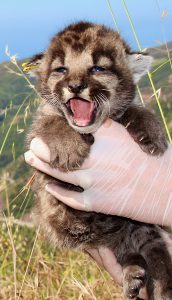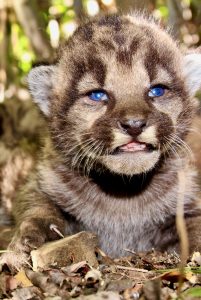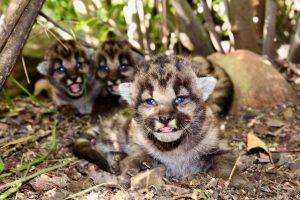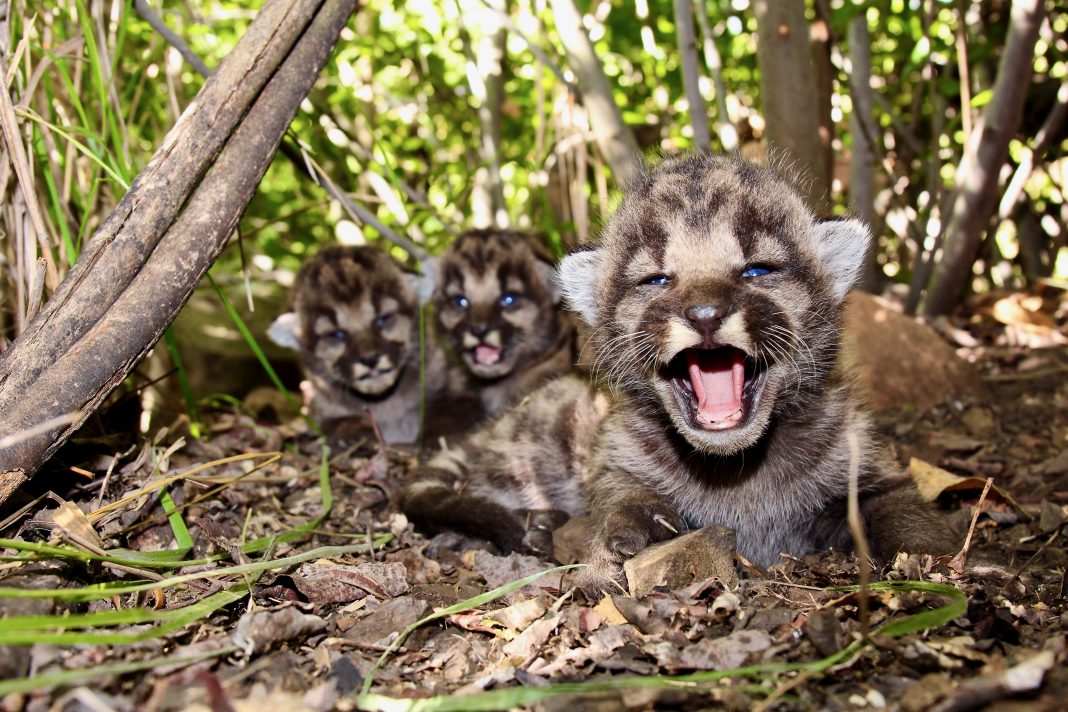SANTA MONICA MOUNTAINS— A female and two male mountain lion kittens were born recently in the Santa Monica Mountains, as announced by the National Park Service on June 3.
The birth of these mountain lion kittens will potentially help the low genetic diversity mountain lions in the area currently face. Over four months ago, the three-year-old mother, P-54, was repeatedly “located” with a male mountain lion, P-63, which tends to indicate mating. Around 90 days later, a series of GPS locations indicated to researchers the mountain lion mother had given birth.

Researchers believe this could be both the mother and father’s first litter. They believe the father will add new genetic diversity to the Santa Monica Mountain population, although only genetic testing will tell.
Jeff Sikich, a biologist studying mountain lions in the Santa Monica Mountains since 2002, said in a statement that the last kittens researchers marked at a den were, “likely the product of inbreeding, which is just one of the serious problems facing the isolated mountain lion population in the Santa Monica Mountains south of the 101 Freeway.”
The two male kittens, P-82 and P-83, and female P-84 were tagged approximately 19 days after birth, deemed to be healthy, and given an ear tag for future ease of identification.
The NPS indicated in a statement that Southern California’s extensive freeway system has created, “a major barrier for wildlife, which is particularly a concern for the mountain lion population largely isolated in the Santa Monica Mountains.”
Southern California’s freeway system often splits populations of mountain lions into small groups, which reduces genetic diversity. Subsequently, any attempt of mountain lions or other wildlife to reach other nearby populations risks their lives.
Researchers with the NPS have predicted that if enough genetic inbreeding occurs, populations in the Santa Ana Mountains could be extinct in 12 years, and the Santa Monica Mountain population could be extinct in 15.

Father of the litter, P-63, crossed the 101 freeway near Simi Hills three times and has since stayed south of the freeway in the Santa Monica Mountains, becoming the only radio-collared adult male in the area and potentially increasing the area’s genetic diversity.
The mother of the litter, P-54, has been tracked by researches nearly since birth. P-54’s mother, P-23, was killed by a vehicle on Malibu Canyon; a busy road that cuts off a large section of the Santa Monica Mountains. Since the NPS began tracking lions in 2002, 21 mountain lions have been killed attempting to cross roads and freeways.
Currently, the NPS is fundraising and planning a wildlife crossing bridge above the 101 freeway near Liberty Canyon in Agoura Hills. The NPS stated, “The bridge would provide a connection between the small population of lions in the Santa Monica Mountains and the large and genetically diverse populations to the north.”
The wildlife bridge is set to be completed by 2023 and will cost $87 million, with 80% of the funding coming from private sources. The wildlife bridge will be the largest in the world, crossing over 10 lanes of traffic and 200 feet.
Earlier this year in April, the California Department of Fish and Wildlife, which is responsible for the conservation of mountain lions, voted unanimously to consider protecting 6 mountain lion populations in the Santa Monica and Santa Ana mountains under California’s Endangered Species Act.

The process consists of a yearlong review of the considered populations, while the act’s protections are in full effect during the consideration period.
The California ESA places the responsibility for the survival of a species into the states’ hands, as well as the potential purchasing of lands and the illegality of hunting a species; although the hunting of mountain lions has been illegal since 1990.
Although mountain lions in the Santa Monica and Santa Ana Mountains face issues of low genetic diversity and populations divided by freeways, the California Department of Fish and Wildlife states that throughout most of the state, mountain lion populations are stable and not endangered.
The National Park Service has studied mountain lions in the Santa Monica Mountains since 2002 with the mission of determining how the lions survive in an urbanized and fragmented habitat.
For more information on mountain lions in the Santa Monica Mountains please click here.
For information on mountain lions in California click here.






